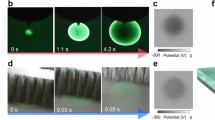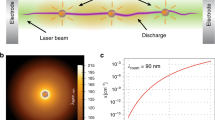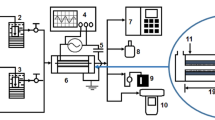Abstract
MR. J. RAND CAPRON'S experiment with the Swan lamp is very interesting; but his inference that the aurora may not be an electric discharge in the upper atmosphere because it does not show nitrogen lines in the spectrum is hardly justified by the experiment. On the contrary, the true significance of that experiment appears to be that there is a certain degree of rarefaction of the air (or vacuum) at which the nitrogen lines disappear. Such a vacuum is given by the Swan, and probably other electric incandescence lamps. According to Mr. Capron's result, when more air got into the bulb and vitiated this fine vacuum, the nitrogen lines appeared. We may say, then, that if the aurora is an electric discharge in the upper air, the rarefaction must be aproximately that of a Sean lamp, if there are no nitrogen lines visible in the spectrum of the light. To study this further some one ought to examine the discharge in vacuum tubes containing air at different degrees of density.
This is a preview of subscription content, access via your institution
Access options
Subscribe to this journal
Receive 51 print issues and online access
$199.00 per year
only $3.90 per issue
Buy this article
- Purchase on SpringerLink
- Instant access to full article PDF
Prices may be subject to local taxes which are calculated during checkout
Similar content being viewed by others
Author information
Authors and Affiliations
Rights and permissions
About this article
Cite this article
MUNRO, J. Swan Lamp Spectrum and the Aurora. Nature 27, 173 (1882). https://doi.org/10.1038/027173e0
Issue date:
DOI: https://doi.org/10.1038/027173e0



